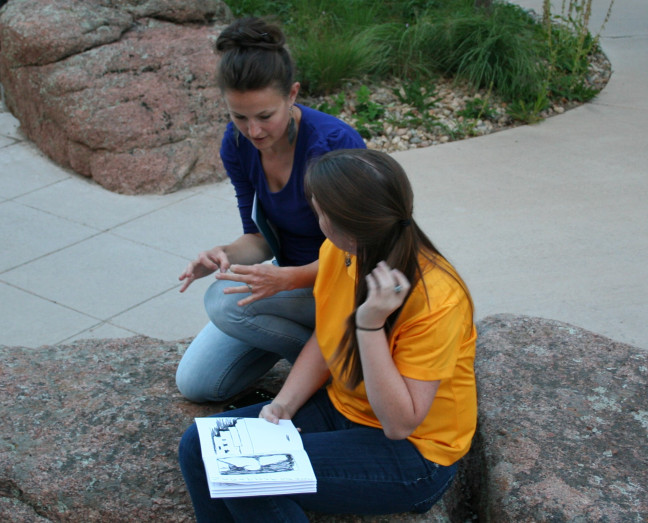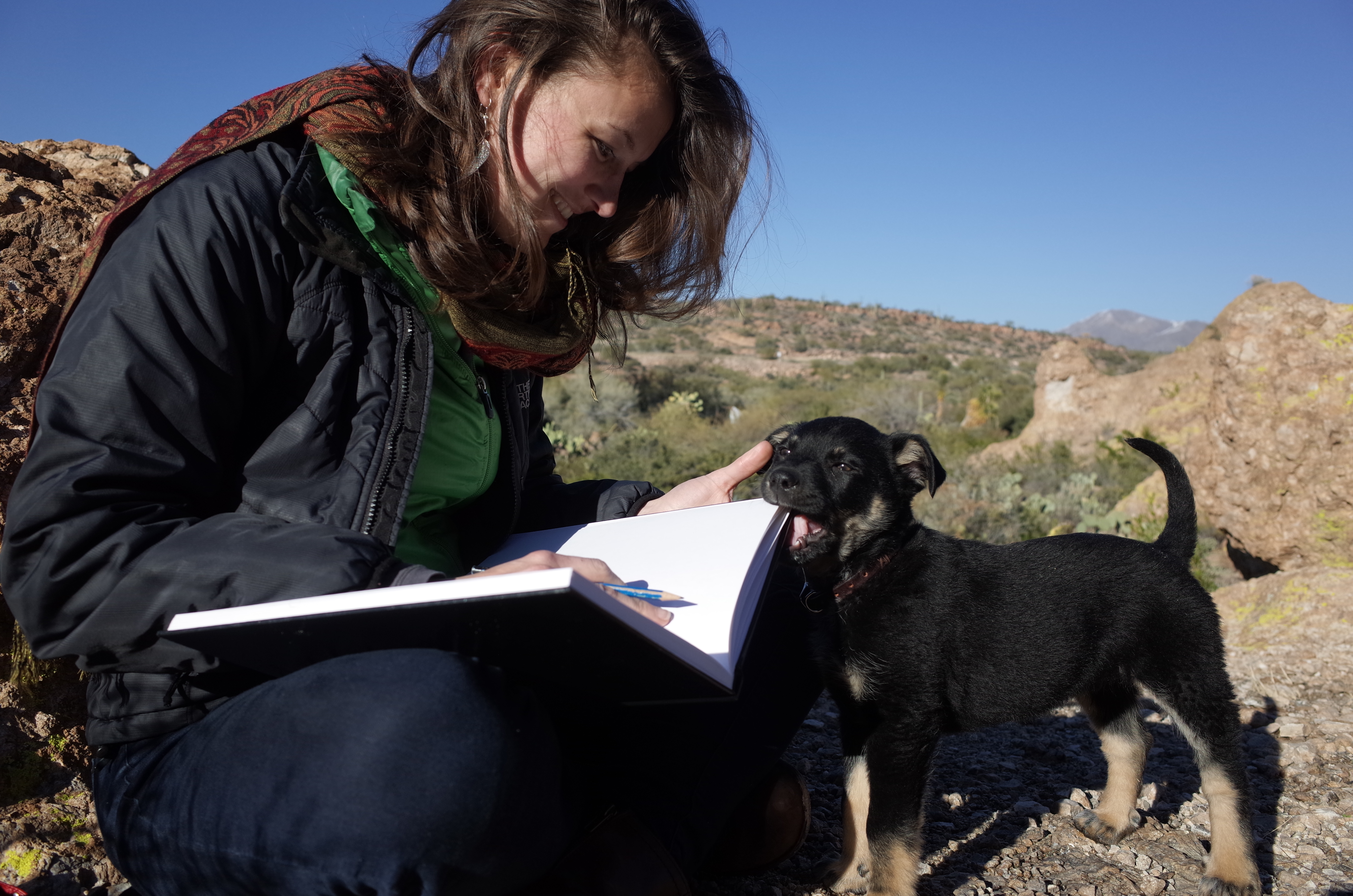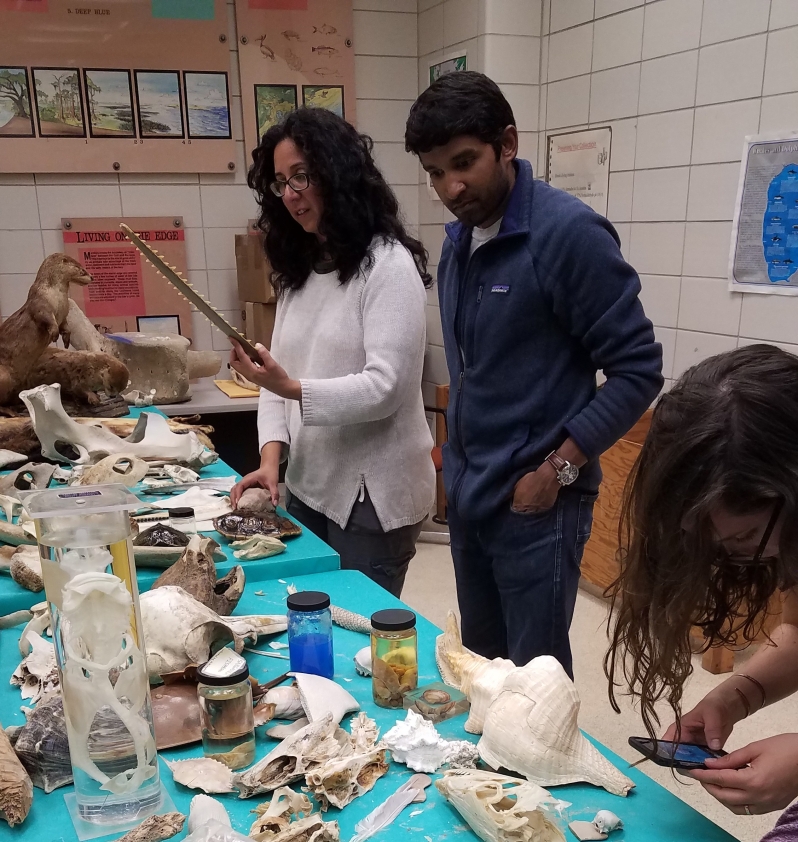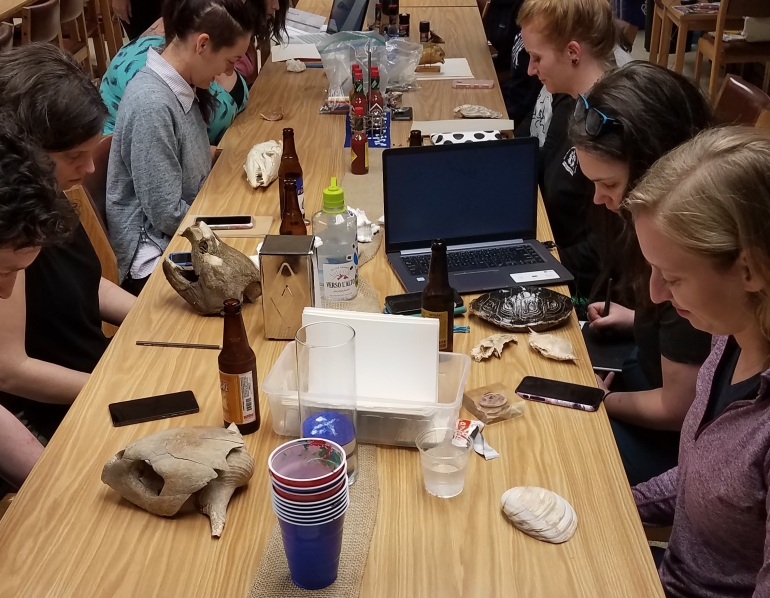Cross-post: I don’t usually post selfies, but that’s about to change. OR, some things #scientistswhoselfie and #sketchyourscience have in common.
In the spirit of expanding the reach and of science communication and engagement conversations happening within and beyond the Communications and Engagement Section, we are going to start re-posting and cross-posting content from C&E Section members. If you would like to have one of your projects or blog posts featured in this series, contact us!
Meanwhile, here’s a cross-post from C&E Section chairperson, Bethann Garramon Merkle. See the original on her website.

Bethann (left) teaching a #sketchingforscientists workshop at the University of Wyoming
I’ve been thinking a lot about the recent Science op-ed that was a personal attack against a well-known and successful science communicator and neuroscientist active on Instagram and other communication and engagement platforms. Among other things, I think about this issue through the lens of art-related insecurities, negative social conditioning, and lack of support that folks often face when pursuing careers in the arts, or even considering trying out an art form.
At its core, the op-ed asserted that women scientists should not be posting selfies on Instagram. The writer then built around that theme an argument driven by an assumption that #ScienceInstagram (and by implication #ScienceTwitter) folks who posted selfies shouldn’t be spending their time on social media at all. Rather, the author asserts, women in science should be “advocating for policy changes at institutional and governmental levels.”
Not only was the editorial an unjustified piece of name-calling, but it missed the point of why many people share their personal+science lives on social media.
I’m not alone in pondering why the author wrote this piece, why Science gave it a platform, and what the fallout may be.
Among the individual responses, two by Paige B. Jarreau and Gabriela Serrato-Marks stood out to me. Both take a close look at why scientists selfie – something I’ve been loathe to do for most of the time I’ve been on social media.
Paige points readers to hard data to quantify Why we scientists do Instagram. She studies how scientists use social media. Her piece is a valuable look at why scientists are actually on social media.
Paige makes the important point that resenting social media users for not doing things, when the users aren’t on social media to do them, is logically flawed.
As she puts it: “…how can we criticize science Instagrammers for somehow ‘failing’ to change gender disparities with their posts and communication efforts, if this goal isn’t even among their more important reasons for using IG?”
Paige’s full article taps into science of scicomm research that quantifies why scientists blog. It also touches on on-going research aiming to quantify why scientists use Instagram. So far, Paige writes, the findings of these studies suggest that core motivations are actually a) practice communication skills, b) share science with nonspecialist audiences, c) foster public interest in science and research, and d) connect with others (often folks doing related research and/or outreach). None of those are what the Science op-ed lambasted; indeed, the op-ed assumed a totally different priority that isn’t substantiated by the data.
Gabriela Serrato-Marks* takes the motivation point a step farther, in this article for Massive Science. Gabi addresses numerous issues with Science providing a platform for the name-calling and negativity in the op-ed. Importantly, she also sought out and highlighted perspectives from numerous other #scientistswhoselfie.
A key takeaway, and one I heartly endorse, is: “By showcasing what they are passionate about, scientists on social media are able to reach large public audiences and break down stereotypes about scientists.” ~Gabriela Serrato Marks

One of my passions is using sketching to learn about new ecosystems. In this picture from a few years ago, my then-pup was getting in on the fun of sketching cacti at the Boyce Thompson Arboretum north of Phoenix, Arizona. I was working on book illustrations commissioned for And Then There Were None, about the demise of bighorn sheep near Tucson, AZ (published in 2017).
No surprise – the theme of Gabi’s article dovetails closely with the motives for both blogging and social media use which Paige writes about. Holding folks accountable for your motives, not theirs, isn’t productive. That is what was demonstrated powerfully by the Science op-ed.
Likewise, we don’t encourage creativity by holding folks accountable for making fine art, photorealistic drawings, or anything else artistic, in a way that doesn’t jive with their own motives for trying and making. Same goes for ourselves — getting some foundational training and practicing are essential to getting better at scientific inquiry and art practicess.
On Twitter, I responded to Gabi’s article with a thread about the relationship I see between #scientistswhoselfie, #sketchyourscience, and advocates and naysayers for both.
I spend a lot of my life in a sort of limbo between art and science – advocating for more of the one when I am in the other space. And, I notice that folks who are not familiar with one or the other, or both, tend to have reluctance and pass judgement in ways that are unproductive.
These observations underpin the Twitter thread I wrote, and I’m reposting that thread here, with slight edits.
https://twitter.com/commnatural/status/980114559955587072
Folks who participated in the #sketchingforscientists workshop got to select specimens from a smorgasbord in the @LUMCONscience collections room! Spaces like these are important for science, and they are like a candy store for #scicomm and #sciart folks!

Part one of most of my #sketching workshops is blind contour drawings, which involve putting tour paper on your lap, under the table. You can’t see the drawing! Just your specimen, so you shift your goal posts: observation > pretty drawing, & evens playing field! All look silly!

By which I do not mean @gserratomarks, @sharkespearean, @coralnerd, @SaraSneath, @_klburke, and @BL_Owens look silly. Rather, the drawings range from abstract to gestural, none photo-realistic. This evens the playing field between those w/ drawing experience and those just starting.
Read the rest of this post, including some important take-aways about risk-taking in science and art, on Bethann’s website!
And, contact us if you would like to have one of your projects or blog posts featured in this series!